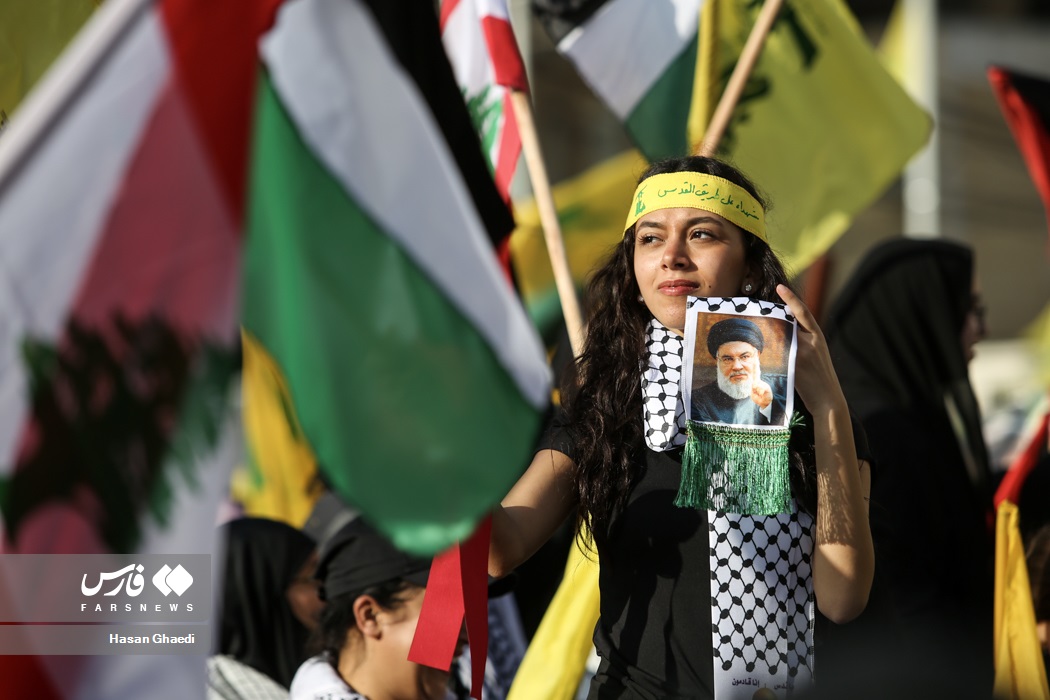Hezbollah’s Secretary General, Sayyed Hassan Nasrallah was laid to rest on Sunday nearly five months after his assassination by Israel. The name ‘Sayyed’ (or Sayyid) represents his claim of descent from the Islamic Prophet Muhammad.
Nasrallah, 64, was killed on September 27 when Israel dropped more than 80 bombs on a high rise building with an underground bunker in Beirut’s southern suburbs. At least six people were killed and over 90 injured following the strike, with several still missing.
His Funeral
Al-Mayadeen reported an estimated 1.4 million people from across Lebanon and the Middle East attended in and around the Beirut’s Camille Chamoun Sports City Stadium to say goodbye. Nasrallah was a man that many Lebanese considered a leader, a father, and a resister. His funeral reflects those sentiments as it was said to be one of the largest in Lebanese history.
Nasrallah’s successor and cousin, Hashem Safieddine, was also honored at the service. He led the group for mere days before an Israeli strike killed him in early October.
Senior Hezbollah official Ali Daamoush told reporters Saturday that “about 800 prominent figures from 65 countries would attend the funeral in addition to thousands of individuals and activists from around the world.”
Irish activist Tara O’Grady told the Associated Press that she came to Beirut “to stand with the people of Lebanon and their resistance against the Zionist regime who are brutally continuing to bomb the south of Lebanon.”
In a video speech played at the stadium and on giant screens outside, Hezbollah’s current leader, Naim Qassim addressed the crowd.
The “massive crowd in Lebanon is an expression of loyalty to the resistance. The resistance is here to stay — we will act whenever we deem it appropriate. The resistance endures and remains present, regardless of what you may think,” he added. “Do not mistake our patience for weakness.”
Mourners threw scarves at the hearse which pallbearers touched on Nasrallah’s turban, placed on top of the Hezbollah-flag-draped coffin, and lobbed it back to mourners.
A large procession trailed the late leader’s hearse to his final resting place in Southern Beirut. The site will serve as a shrine for the slain leader, Hezbollah officials said.
Lebanon had announced it would close its airspace for four hours during the funeral proceedings for security reasons. That however, didn’t stop Israel from making its presence known — low-flying Israeli fighter jets flew over the funeral and broke the sound barrier over Beirut.
Israel’s defense minister, Israel Katz, said the jets were meant to send a “clear message” that “anyone who threatens to destroy Israel and attacks Israel — this will be their end.” In a provocation, the Israeli military on Sunday also released footage of what it says is Nasrallah’s assassination.

Legacy
Under Nasrallah’s leadership of Hezbollah, modern Lebanon was able to militarily defend itself against Israel. He became an admired figure in Lebanon.
In 2007, Lebanese singer Alaa Zalzali composed a tribute song entitled “Ya Nasrallah.” Another popular song composed in tribute to him was by Lebanese Christian singer Julia Boutros, called “Ahebba’i,” meaning “my loved ones,” which was inspired by Nasrallah’s words in a televised message he sent to Hezbollah fighters in southern Lebanon during the 2006 war.
Nasrallah is survived by his wife, Fatima Yassin. He also has three sons Jawad, Mohammed-Mahdi and Mohammed Ali, and a daughter Zeinab, as well as several grandchildren.





